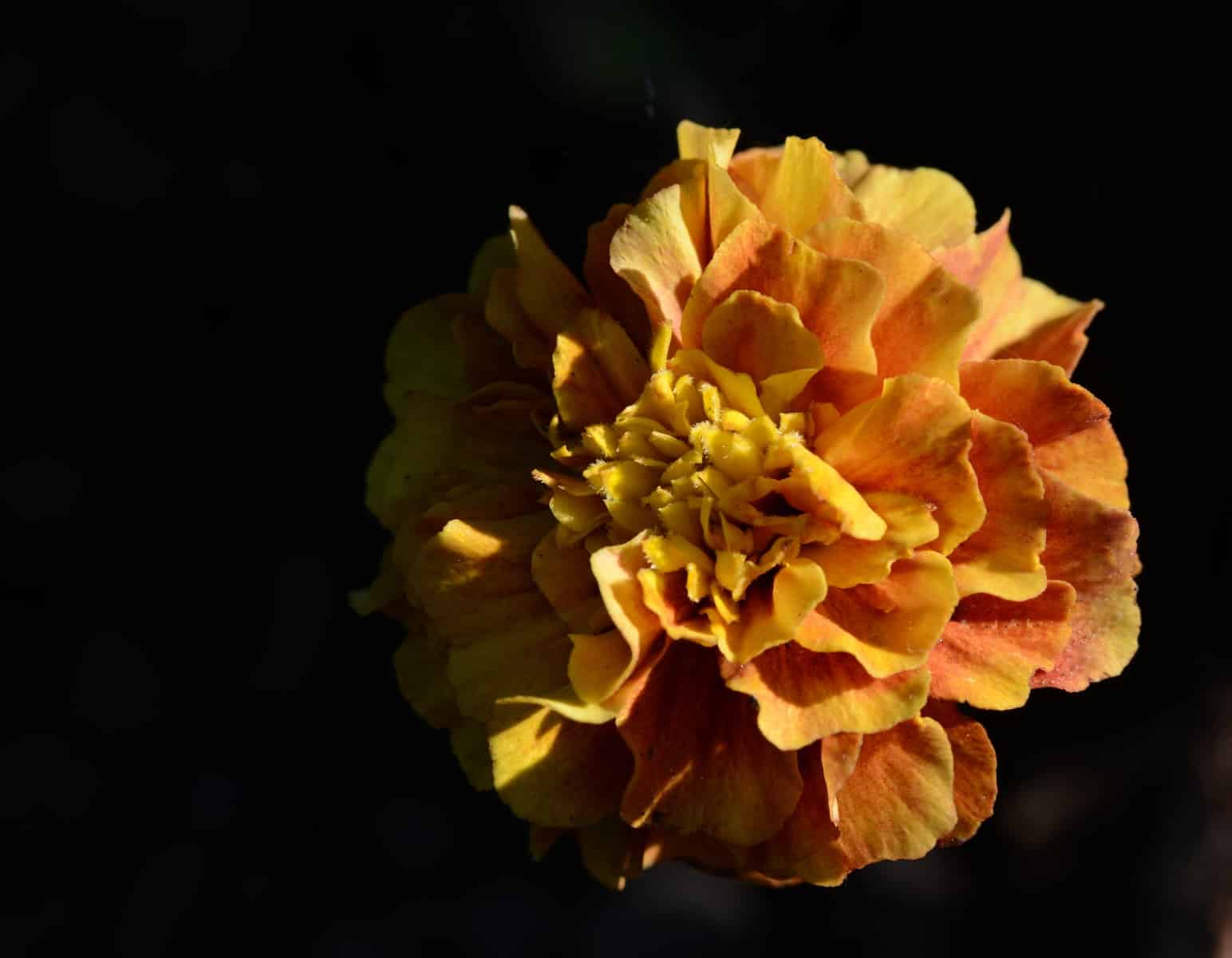Marigold, also known as Tagetes, is a flower that has been used for centuries for medicinal and ornamental purposes. This flower belongs to the sunflower family and is native to the Americas, although it is now found in many parts of the world. In this article, we will explore the meaning, properties, and uses of the marigold flower in different contexts.
The Meaning of Marigold Flower
Marigold is known for its symbolism in many cultures. In Mexico, it is a symbol of the Day of the Dead celebrations and is used to decorate the graves of loved ones. In India, marigold flowers are offered to the gods during festivals and religious ceremonies. In the language of flowers, marigold is associated with passion, creativity, and warmth. It is also believed to symbolize happiness, joy, and protection.
Properties of Marigold Flower
Marigold flower is rich in antioxidants, flavonoids, and essential oils, which give it various medicinal properties. Some of the notable properties of marigold flower are as follows:
Anti-inflammatory
Marigold flower has anti-inflammatory properties that help reduce inflammation in the body. This makes it an effective remedy for conditions such as arthritis, eczema, and sore throat.
Antimicrobial
Marigold flower has antimicrobial properties that help fight against bacterial and fungal infections. It is effective in treating skin infections, such as acne, dermatitis, and fungal infections.
Antioxidant
Marigold flower is rich in antioxidants, which protect the body against the harmful effects of free radicals. This makes it an effective remedy for conditions such as cancer, heart disease, and Alzheimer’s disease.
Antispasmodic
Marigold flower has antispasmodic properties that help reduce muscle spasms and cramps. It is effective in treating menstrual cramps, digestive issues, and headaches.
Astringent
Marigold flower has astringent properties that help tighten and tone the skin. This makes it an effective remedy for conditions such as wrinkles, sagging skin, and sunburn.
Diuretic
Marigold flower has diuretic properties that help increase urine production and eliminate excess fluids from the body. This makes it an effective remedy for conditions such as edema, kidney stones, and urinary tract infections.
Uses of Marigold Flower
Marigold flower has a wide range of uses in different contexts. Some of the notable uses of marigold flower are as follows:
Medicinal Uses
Marigold flower has been used for centuries in traditional medicine for its various medicinal properties. Some of the common medicinal uses of marigold flower are as follows:
- Skin Care: Marigold flower is used in many skin care products due to its astringent, antimicrobial, and anti-inflammatory properties. It is effective in treating conditions such as acne, dermatitis, and sunburn.
- Digestive Health: Marigold flower is effective in treating digestive issues such as constipation, indigestion, and stomach ulcers. It has antispasmodic and anti-inflammatory properties that help reduce inflammation and spasms in the digestive tract.
- Menstrual Cramps: Marigold flower is effective in reducing menstrual cramps and pain due to its antispasmodic properties. It can also help regulate menstrual cycles.
- Eye Health: Marigold flower is used to treat various eye conditions such as conjunctivitis, cataracts, and macular degeneration due to its antioxidant and anti-inflammatory properties.
Culinary Uses
Marigold flower is also used in cooking due to their colorful appearance and unique flavor. Some of the common culinary uses of marigold flower are as follows:
- Edible Decoration: Marigold flower petals are used to add a pop of color to salads, soups, and stews. They can also be used as a garnish for cakes, cupcakes, and other desserts.
- Herbal Tea: Marigold flower is used to make herbal tea, which is believed to have various health benefits. Marigold tea is said to improve digestion, boost the immune system, and reduce inflammation in the body.
- Spice: Marigold flower is used as a spice in many cuisines, especially in Mexican and Indian cuisine. It is added to soups, stews, and curries to add a unique flavor to the dishes.
Ornamental Uses
Marigold flower is also popular for its ornamental uses due to its bright colors and long-lasting blooms. Some of the common ornamental uses of marigold flower are as follows:
- Garden Decoration: Marigold flower is a popular choice for garden decoration due to its bright colors and easy-to-grow nature. It is often used to border garden beds, as well as in hanging baskets and window boxes.
- Floral Arrangements: Marigold flower is used in floral arrangements, both as a centerpiece flower and as a filler. It is often paired with other flowers, such as roses and lilies, to add a pop of color to the arrangement.
- Festive Decorations: Marigold flower is used in various festive decorations, such as Day of the Dead celebrations in Mexico and Hindu festivals in India. It is often used to make garlands and other decorative items.
Types of Marigold Flower
There are two main types of marigold flower: French marigold (Tagetes patula) and African marigold (Tagetes erecta). Both types have similar medicinal and ornamental properties, but differ in their appearance and growing conditions. Some of the notable differences between the two types of marigold flower are as follows:
French Marigold
- Height: 6-12 inches
- Flower Size: 1-2 inches in diameter
- Colors: Yellow, orange, and red
- Growing Conditions: Full sun, well-draining soil
- Uses: Garden decoration, medicinal purposes
African Marigold
- Height: 1-3 feet
- Flower Size: 2-5 inches in diameter
- Colors: Yellow, orange, and gold
- Growing Conditions: Full sun, well-draining soil
- Uses: Garden decoration, floral arrangements
How to Grow Marigold Flower
Marigold flower is easy to grow and requires minimal care. It can be grown from seeds or transplanted seedlings, and can be grown in garden beds, containers, or hanging baskets. Some of the key steps for growing marigold flower are as follows:
Step 1: Choose a Growing Location
Marigold flower requires full sun and well-draining soil to grow properly. Choose a location that receives at least 6 hours of sunlight per day and has well-draining soil.
Step 2: Prepare the Soil
Prepare the soil by removing any weeds and debris, and adding compost or organic matter to improve the soil quality. Marigold flower prefers a slightly acidic soil pH of 6.0-7.0.
Step 3: Plant the Seeds or Seedlings
Plant the marigold seeds or seedlings in the prepared soil, spacing them 6-8 inches apart. Water the soil well after planting.
Step 4: Water and Fertilize
Water the marigold flower regularly, especially during hot and dry weather.
Marigold flower does not require much fertilizer, but can benefit from a balanced fertilizer once a month during the growing season.
Step 5: Prune and Deadhead
Prune the marigold flower regularly to promote bushy growth and remove any dead or damaged leaves and flowers. Deadhead the spent flowers to promote new blooms.
Step 6: Pests and Diseases
Marigold flower is relatively resistant to pests and diseases, but can be affected by aphids, spider mites, and whiteflies. Use insecticidal soap or neem oil to control these pests.
Conclusion
Marigold flower is a versatile flower that has been used for centuries for its medicinal and ornamental properties. It is rich in antioxidants, flavonoids, and essential oils, which give it its various medicinal properties. Marigold flower is used in traditional medicine for treating various health conditions, as well as in cooking and garden decoration. It is easy to grow and requires minimal care, making it a popular choice for gardeners and flower enthusiasts. With its bright colors and unique flavor, marigold flower is sure to add a pop of color and flavor to any garden or dish.





























